Article by Jeanne Connolly – We explore 10 projects that feature unique uses of paving in landscape design , exploring what works with this fundamental landscape feature. Plants aren’t the only material landscape architects are trained to use. The ground beneath your feet is an important detail that can make a bigger impact than you think. While paving material is sometimes overlooked, it is an important piece of the landscape palette that can make or break a design. A skilled designer chooses every material thoughtfully, relating to the meaning or concept of the site or context.
Paving in Landscape Design
Here are 10 unique projects that display different ways paving can impact the experience of a space:
1. Place d’Youville
Claude Cormier uses wood, concrete, granite, and limestone to create a quilt-like appearance at Place d’Youville. This paving technique is used to reflect Montreal’s 500-year history of sidewalk construction. Even the placement of these paths complements the site’s history, as they meet at the access points of important surrounding historical buildings. From “New Public Square in Montreal” on the Claude Cormier and Associes website, it is interpreted as “creating a dialogue with the area’s history.” This is a great way to think of materiality, as a “dialogue” for the site.
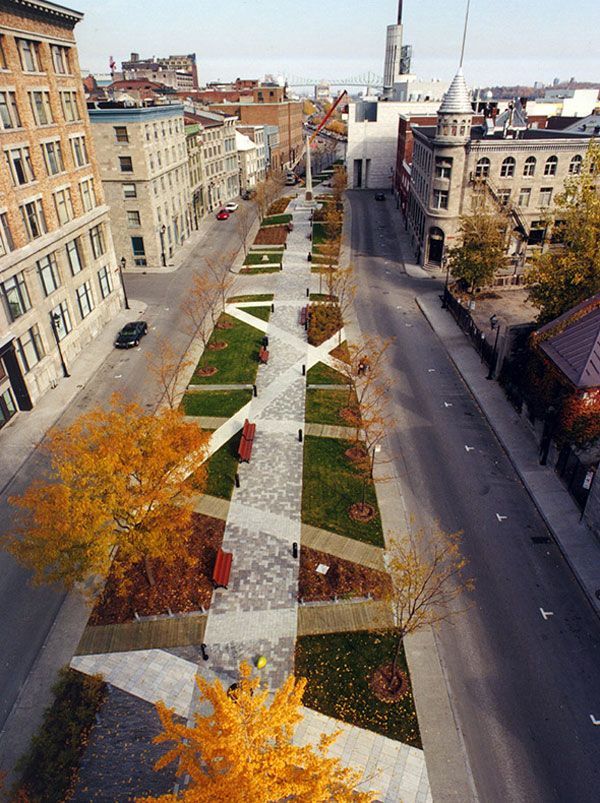
Place d’Youville. Photo courtesy of Claude Cormier + Associés.
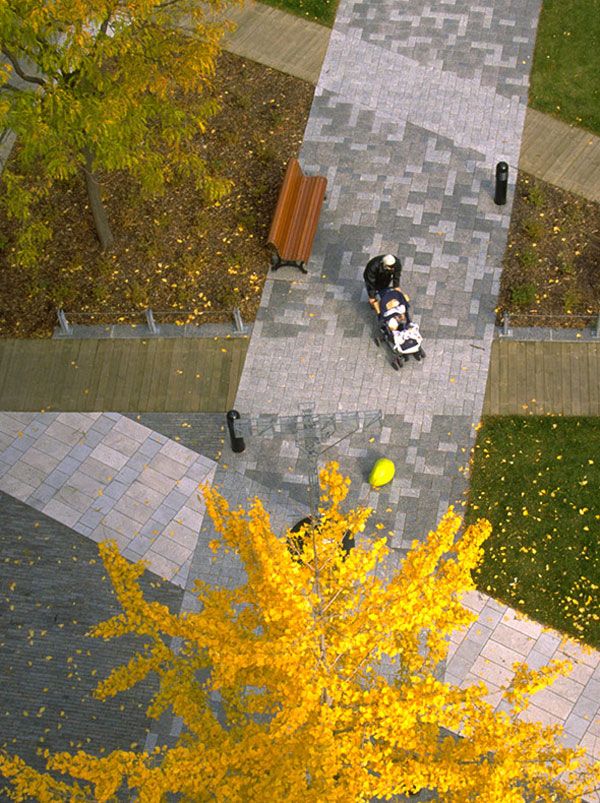
Place d’Youville. Photo courtesy of Claude Cormier + Associés.
2. Van Gogh Path
Based on Daan Roosegarde of Studio Roosegaarde’s SMART HIGHWAY initiative to make sustainably smart roads that incorporate night lighting, this project showcases pavement as a way of making roads safer for bicyclists at night. Inspired by Van Gogh’s “Starry Night” painting, the Van Gogh Path is a 600-meter-long bicycle path running where Vincent Van Gogh lived from 1883 to 1885. Light stones are used to create patterns on the path that are charged by sunlight and glow at night. This use of materials interplays light and poetry while making a more sustainable and safe pathway.
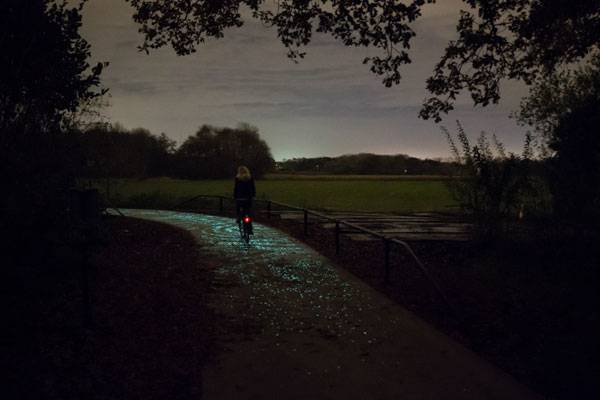
Credit: ‘Daan Roosegaarde’ and Heijmans
3. Beaufort Street
Beaufort Street displays artist Roly Skender’s creative approach to improving driving experience with an alternative to dull black asphalt. He designed interesting and vibrant patterns that indicate “slow points” at the entrances and exits of this busy street. It’s not just paint, either: StreetPrint is a decorative paving system installed by DrainPave that can replicate just about any design with a wide range of colors. The material combines the strength of concrete with the flexibility of asphalt, resulting in a visually appealing and durable road surface. Imagine the difference this would have on our driving experience if streets were designed this artistically in more places in the world!
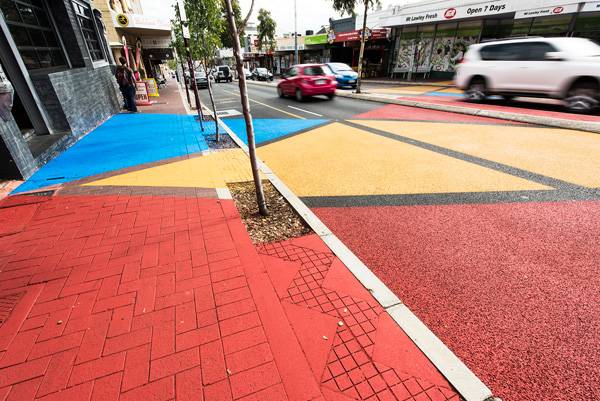
Credit: DrainPave ,Beaufort Street
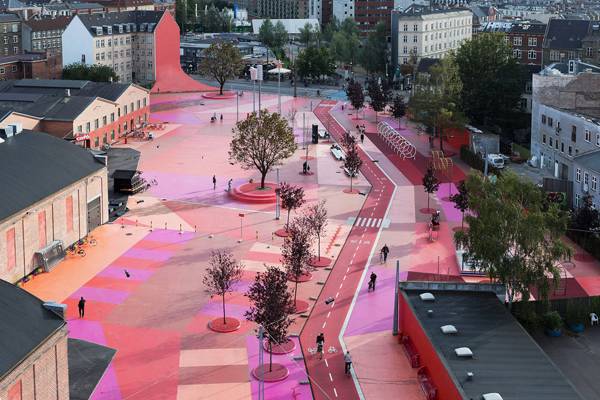
Pedestrian friendly street. “Creative Commons BIG – Bjarke Ingels Group – SUK – Superkilen Park, Copenhagen, Denmark”. Source Forgemind ArchiMedia, licensed under CC 2.0

“Superkilen, Copenhagen, Denmark”. Source, licensed under CC 2.0
5. Beekman Plazas
James Corner Field Operations and Piet Oudolf’s use of paving imitates the rhythm and movement of busy downtown Manhattan. Although the concept of this design is to replicate the daily life of a city that is known to be highly stressful, the blending of materials creates a calmness that is attractive and inviting. The interlacing concrete and granite pavers are skillfully placed, creating what looks like a sporadic blend of light and dark. This paving technique really defines the movement and flow of the space, while also relating to the context of the city.
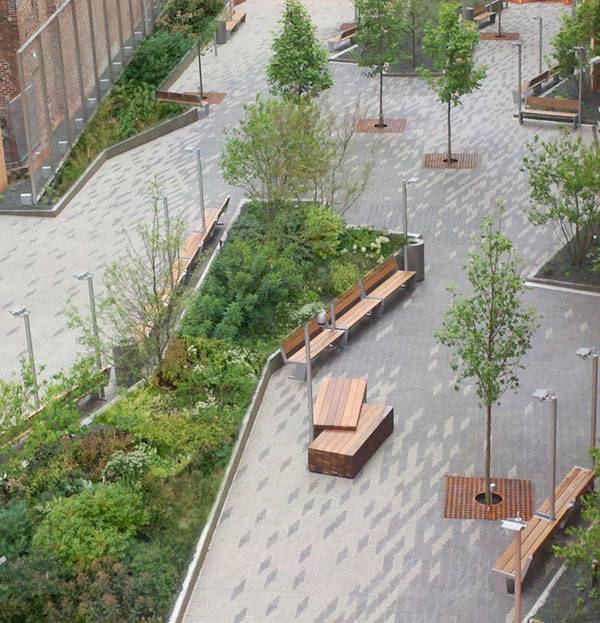
© James Corner Field Operations
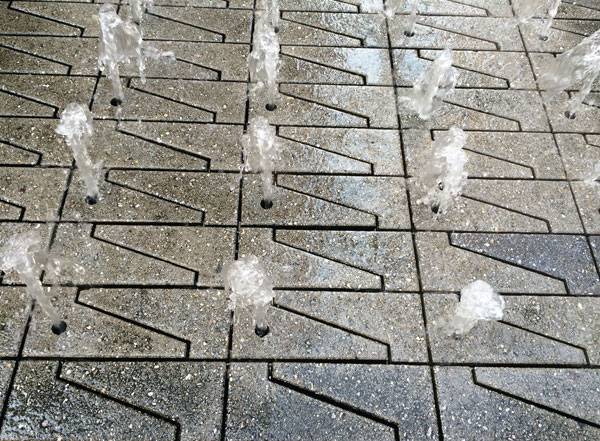
Figure 1: Beekman Plazas paving detail. Image credit: James Corner Field Operations.
6. Brown University’s Jewelry District Public Realm
As an expansion of Brown University’s Medical School, the urban plaza of Ship Street Square designed by !melk Landscape Architects and Urban Designers innovatively introduces a new paving material. A defining characteristic of historical Providence, Rhode Island, is the traditional cobblestone streets. To continue this timeless style, the iconic “!melk blue®” paver was designed exclusively for this project. The pavers interconnect with several other materials, such as wood decking, keeping the space unique and interesting. Innovative and historically sensitive, the pavement makes this project a success.

©!MELK
7. Levinson Plaza
Inspired by New England’s regional garden landscapes, Mikyoung Kim Design created an urban grove that clearly catches the eye with one glance. The bold herringbone pattern of Levinson Plaza’s pavement was thoughtfully designed throughout the grove, creating access to entry and exit points. The alternation of vegetation and pavement defines the human scale of this design, which makes the space so comfortable.
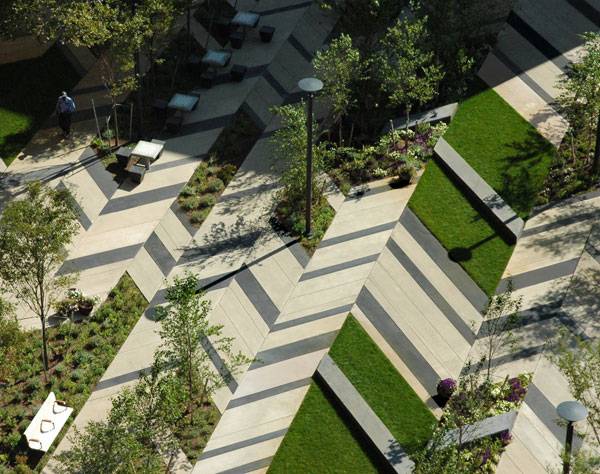
Levinson Plaza by Mikyoung Kim Design.
8. Solingen Town Hall Square
The design team at scape Landschaftsarchitekten takes a more modern approach to paving at Solingen Town Hall Square. The distinctive concrete carpet at Solingen Town Hall Square gives the project visual continuity while also physically connecting different areas. The paving changes where vegetation starts, creating a smooth blend throughout each of the spaces.
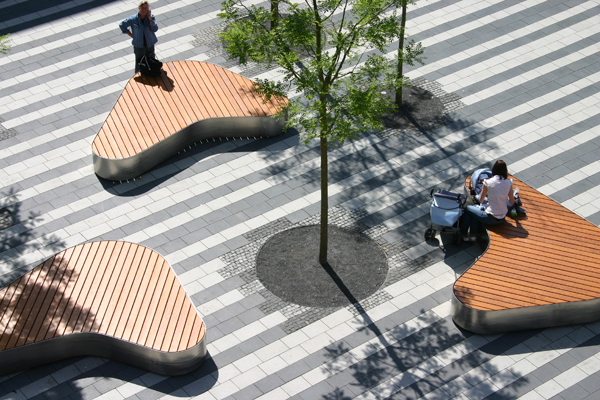
Town Hall Square Solingen. Credit: Landschaftsarchitekt AKNW
9. Coyoacán Corporate Campus
DLC makes use of sustainable materials for Coyoacan Corporate Campus in one of Mexico’s oldest neighborhoods. The materials were chosen based on their low maintenance and durable characteristics. Black volcanic granite is used for the ground surfaces and walls, and composite wood (60 percent bamboo, 40 percent non-toxic resin) was used for the wooden decks. Sustainable paving contributes to a space designed to last years into the future.
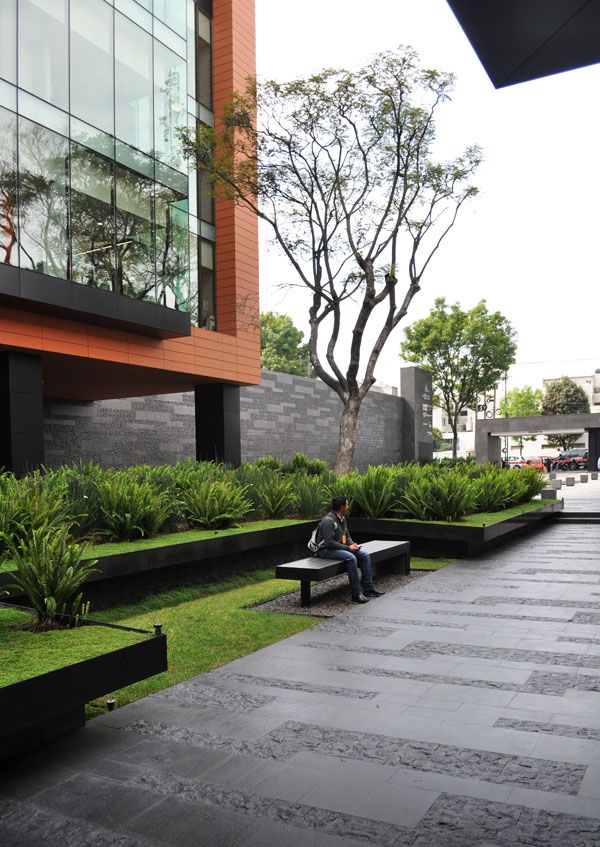
Photo courtesy of DLC Architects
10. Centenary Square
Using local materials, JMD Design improved connectivity and reestablished Centenary Square as Parametta, Australia’s civic center. Meant as a place for community events and gathering, the Australian black granite paving unifies the large central space. The custom-cut pattern shows off a high quality and look consistent with the City Centre of Parramatta.
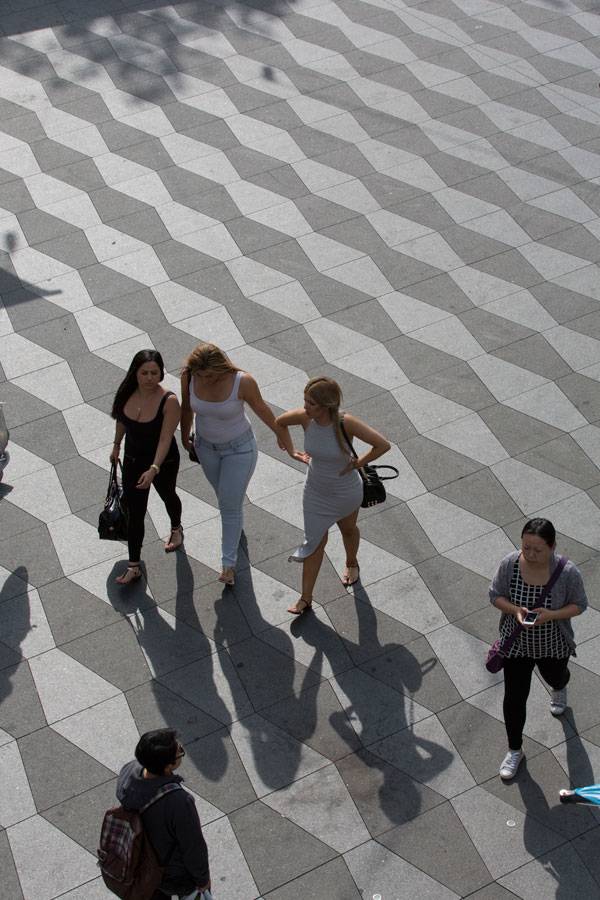
Centenary Square. Photo credit: Brett Boardman
Take away From Paving in Landscape Design
It is just as important to consider paving as any other material in landscape design. We’ve seen that it can be symbolic, sustainable, artistic, and even relate to the history of the site. When used correctly, the blend of paving into a site can create movement and visual continuity, resulting in a successful design.
Recommended Reading:
- Becoming an Urban Planner: A Guide to Careers in Planning and Urban Design by Michael Bayer
- Sustainable Urbanism: Urban Design With Nature by Douglas Farrs
Article by Jeanne Connolly
Published in Blog

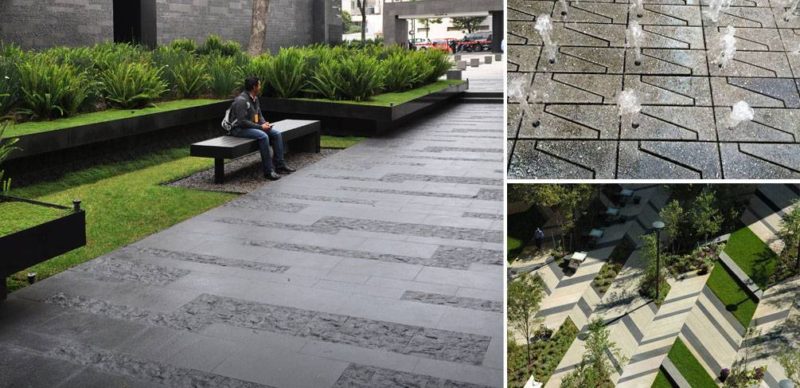

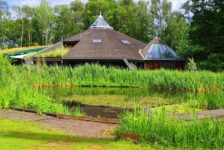


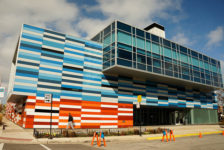
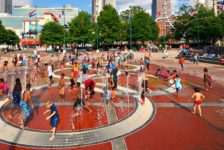

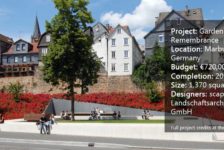
Pingback: St Paul Home And Garden Show 2016 - Modular Home Ideas